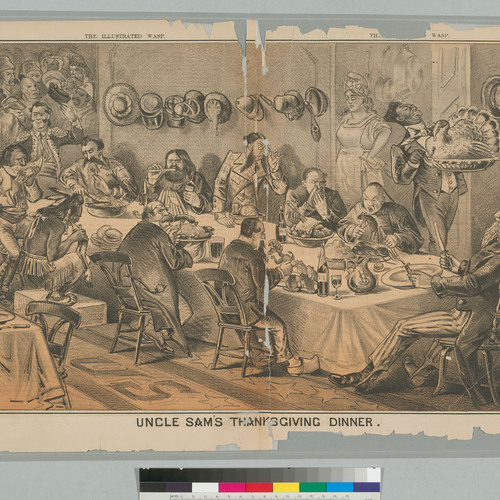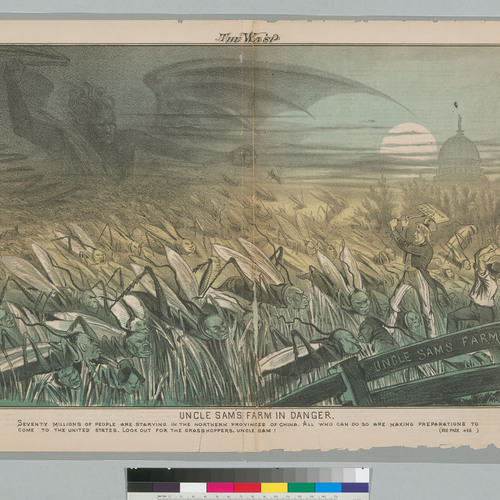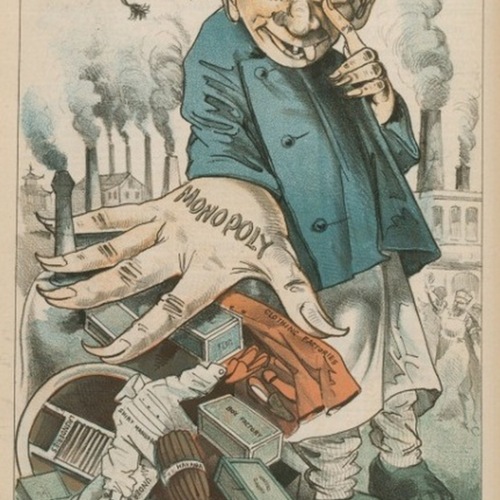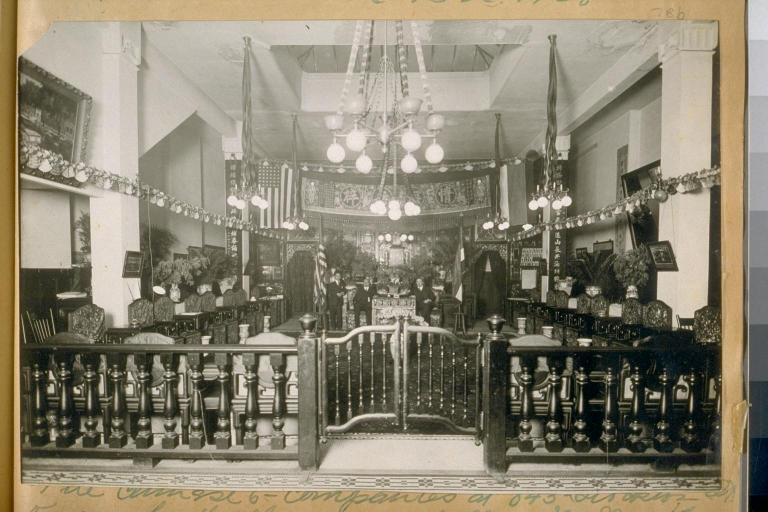Population and discrimination
In the mid-19th century, Chinese immigration to the United States began modestly, with only a few hundred Chinese laborers arriving during the early stages of the California Gold Rush around 1848. These initial immigrants were primarily men from Guangdong Province, driven by economic hardship and the promise of gold in California. By 1852, the Chinese population in California had grown significantly to over 20,000, as word of opportunities in the "Gold Mountain" spread. Many immigrants viewed their journey as temporary, hoping to earn money and eventually return home. However, as the gold rush waned, Chinese immigrants began to diversify their roles, moving into industries such as railroad construction, agriculture, and small businesses. This adaptability led to the steady growth of Chinese communities across the American West. By the 1870s, Chinese immigrants made up nearly 10% of California's population, forming close-knit communities to support one another amidst growing racial discrimination. These early settlers laid the foundation for the enduring presence of Chinese Americans in the United States, even as exclusionary policies later sought to restrict their numbers and limit their opportunities.
These images reflect the pervasive discrimination against Chinese immigrants during the 19th century, as well as the resilience and resistance they demonstrated in response. The first image, titled "Uncle Sam's Thanksgiving Dinner," presents a satirical and contrasting view of inclusion, where the reality was starkly different for Chinese immigrants. While the illustration implies a place for diverse groups at America's table, in practice, Chinese immigrants were often excluded from economic opportunities and social acceptance due to widespread racism.
The second image, "Uncle Sam's Farm in Danger," uses a menacing metaphor of locusts to depict Chinese immigrants as a threat to American society. This imagery reflects the xenophobic fearmongering of the time, where Chinese immigrants were accused of overwhelming American resources and jobs, further fueling support for exclusionary laws like the Chinese Exclusion Act of 1882.
The third image caricatures a Chinese individual, exaggerating features and labeling their role as monopolistic or threatening to American industries. Such propaganda dehumanized Chinese immigrants and contributed to the belief that they were a danger to the American way of life.
Despite this systemic prejudice, Chinese immigrants resisted through community building and legal challenges. They established tightly-knit enclaves like Chinatowns, which became cultural and economic havens. Chinese organizations, such as the Chinese Six Companies, provided mutual aid and advocated for their rights in courts, fighting discriminatory taxes and violence. Their resilience in the face of adversity laid the groundwork for later civil rights movements and the eventual repeal of exclusionary laws. These struggles highlight both the deep-seated racism of the era and the enduring spirit of those who fought for equality and recognition in a hostile society.
The Chinese Six Companies, also known as the Chinese Consolidated Benevolent Association (CCBA), was an influential organization formed in San Francisco during the mid-19th century. This association emerged out of necessity as Chinese immigrants faced widespread discrimination, exclusion, and violence in the United States. Initially composed of representatives from six regional clan or district-based organizations (known as tongs or huiguan), the CCBA aimed to provide leadership, advocacy, and support for the growing Chinese community.
The Six Companies played a crucial role in protecting and uniting Chinese immigrants during a time of significant adversity. They acted as a governing body for the Chinese community in San Francisco, mediating disputes, providing legal representation, and assisting new immigrants in adjusting to life in America. The organization helped members find housing, employment, and legal assistance, especially in response to discriminatory laws like the Foreign Miners’ Tax and the Chinese Exclusion Act of 1882. Beyond providing social support, the CCBA actively resisted anti-Chinese legislation by funding legal challenges, lobbying government officials, and raising awareness about the injustices faced by Chinese immigrants.
The Six Companies also served as a cultural and social hub, preserving traditional Chinese customs and organizing community events. In a hostile environment, the CCBA symbolized resilience and solidarity, fostering a sense of identity and pride among Chinese immigrants. Its establishment was critical in helping the Chinese community survive and advocate for their rights during one of the most challenging periods in their history. Today, the legacy of the Chinese Six Companies endures as a testament to the power of unity and collective action in the face of systemic discrimination.



